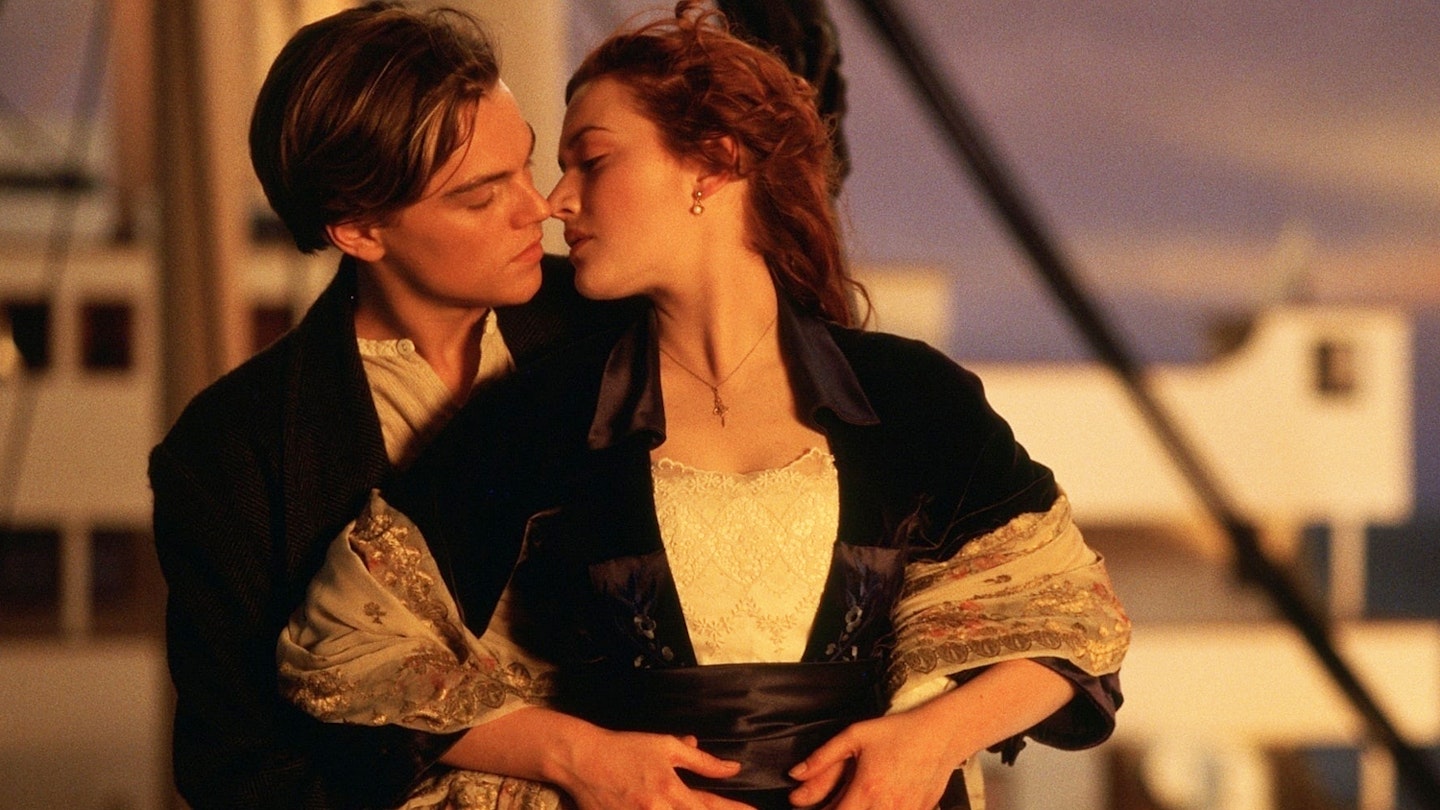It’s been 25 years since James Cameron’s Titanic movie did the opposite of sink. Despite fears of its colossal budget and reports of a tumultuous production, it became a box office behemoth that wowed audiences worldwide with its jaw-dropping disaster spectacle and heartbreaking love story. In hindsight, it was always destined to be a monster hit. In the moment, that didn’t seem so certain. Revisit Empire’s original 1998 feature exploring the making of a movie that defied all the odds – and once again proved that age-old adage: never bet against James Cameron.
When James Cameron was a boy, living in the tranquil suburbia near Niagara Falls, Ontario, a neighbour’s son stole some of his toys. James was naturally upset. But instead of bringing the matter to the attention of his parents, he decided to take more direct action. He raided his dad's toolbox, climbed the garden fence and began to saw through the branch that held up his rival's prized tree house. Later, as the kid's father tried to repair the damage, the whole structure, pop and all, crashed to the ground. You get the feeling that the neighbourhood was more than a little anxious when little Jimmy Cameron was around.
Three decades later, the boy who spent his summers making fully working siege engines and subjecting mice to unwanted deep river exploration in model submarines is on top of the world. He's perched 162 feet in the air on a camera crane looking down on the latest of his playthings. In this case a 775 foot replica of the Titanic which is sitting in a 17 million gallon tank in the middle of a Mexican studio which he built just for the purpose. The movie has already gone spectacularly over budget, and stories have leaked to the press of figures in the region of $285 million dollars when the thing finally docks. Yarns of dozens of injured stuntmen, truculent stars, and drugged lobster chowder have been appearing with exciting regularity in the world's film press. “He's gone Kurtz,” an insider would tell one journalist. “Like he did on The Abyss.” Execs were in the midst of cutting multi-million deals to try and salvage something which may well be the financial equivalent of the liner going down while necking Pepto Bismol like it was going out of fashion. Up on his crane Cameron looks down on the biggest toy he has ever built for himself. No one is going to take this one away from him. They wouldn't dare.
———
Of course, it's all over now, and James Cameron is sitting in a suite in London's Dorchester hotel. Last night was the Royal premiere of his three hour 17 minute opus and the news is out. The film is good. The film is very good indeed and critics lucky enough to see it have been forced to tear up and dab their eyes with their half written screeds on the profligacy, irresponsibility and general decadence of modern moviemaking and James Cameron in particular.
“I would say, to use a British term, brilliant,” he smiles when asked how last night had gone. “Not that I've ever been to a Royal premiere but I'm told it was a good reaction. They gave the film a standing ovation at the end.”
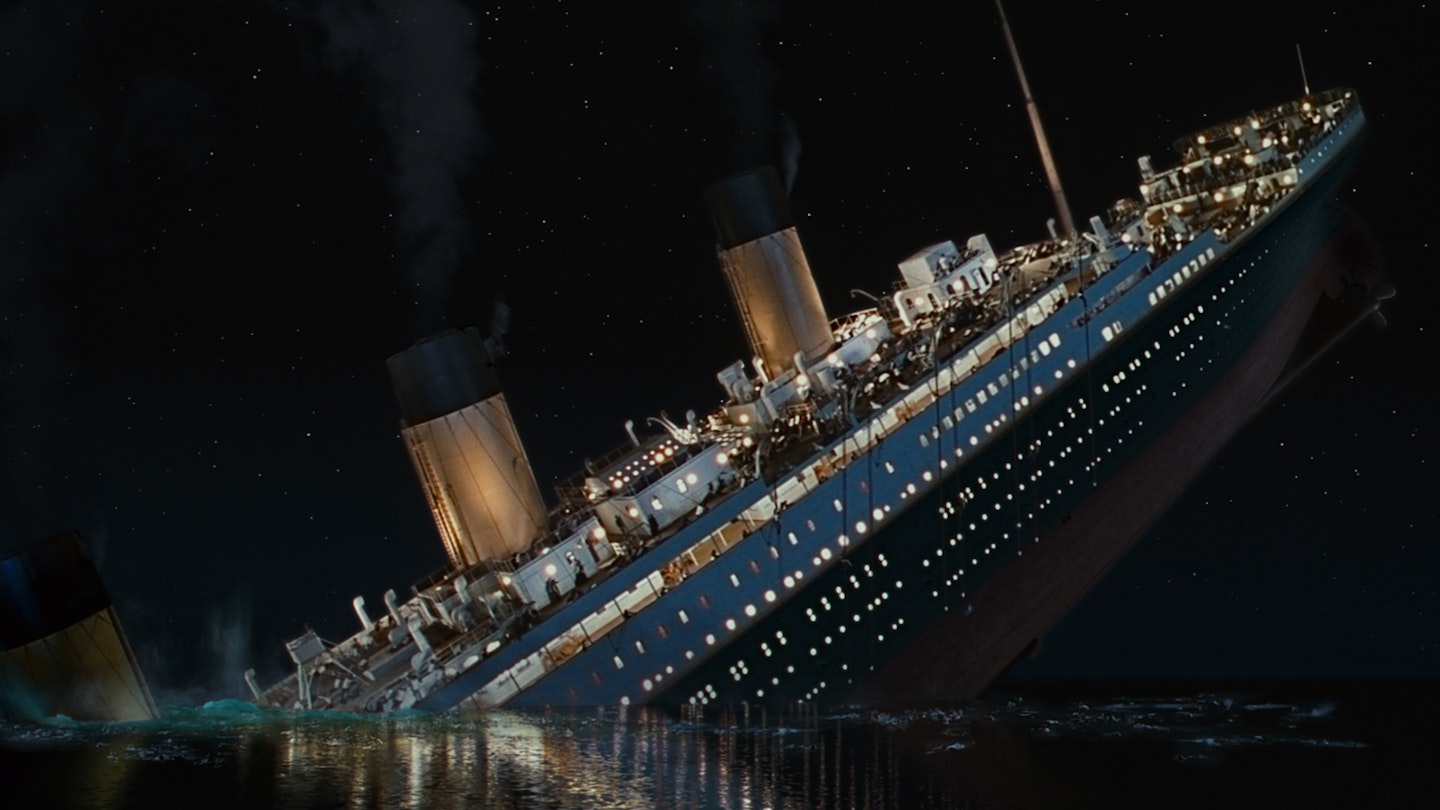
It must be something of a relief for the 43-year-old director. Though he's no stranger to the biggest of big budget blockbusters (True Lies cost $98 million, Terminator 2 around $100 million), this one could easily have ended in tears. Originally greenlighted at $125 million, the budget, the most persistently discussed aspect of the film during its making, began to balloon almost immediately. Mostly because a key component of the movie was the set itself.
“People are saying $285 million,” he sighs. “I don't even know where that comes from. It's pure speculation. I checked before I flew in. The final budget is $200 million. I was kind of hoping we were somewhere under the $200 million mark but we're hovering on the cusp. We might be a couple of hundred thousand dollars over. I can only assume that it's a case of one journalist trying to outdo the other with some new outlandish version of it. So I've just decided to tell people how much the damn movie cost. Otherwise they'll assume it's more.”
I started reading up on the history and that is very seductive. The event is almost perfectly novelistic – James Cameron
Budget worries, though, did prompt Cameron, midway through the shoot, to announce that he was waiving his rights to any profit from the film. A gesture that could have cost him tens of millions of dollars.
"I believe in a sense of responsibility at all times," he says when asked why he would make not a cent from the most expensive movie ever made. "Look, I make this movie called T2, it cost a $100 million and I feel I'm being completely responsible to the people who are spending that money. True Lies, same thing. The film's budgeted at $88 million, comes in at $'98. Big fucking deal. It's going to make a fortune. Which it did. Now, I'm making Titanic. It's a little more marginal from its profitability model. It's longer. It's a period drama. It's not a star vehicle. It's a risk but Fox thought, you know, we're going to roll the dice on this. I lead these guys down the path, things go haywire and we end up spending way more money. But there's no way I can reduce the expenditure and still discharge my responsibility to them. They are going to spend a lot of money regardless and they can spend that money on a piece of junk or on a really good movie. There was a certain line I felt I couldn't cross artistically and I was pushed to that line in an attempt to stem the haemorrhage of dollars. The only thing I could do was give something back. It showed I was putting my money where my mouth was. That I didn't think that there was another cut that was valid. And now they know that I'm going to go way out of my way to make sure that this doesn't happen again. It cost me money, and I can't afford to do this twice in a row."
Titanic began for James Cameron with a couple of murky images on the television news. After years of searching, a diving team lead by Dr. Robert Ballard found the Titanic's resting place. A year later he would dive to the wreck and the world would see the haunting first pictures of the silty remains of The World's Most Luxurious Liner.
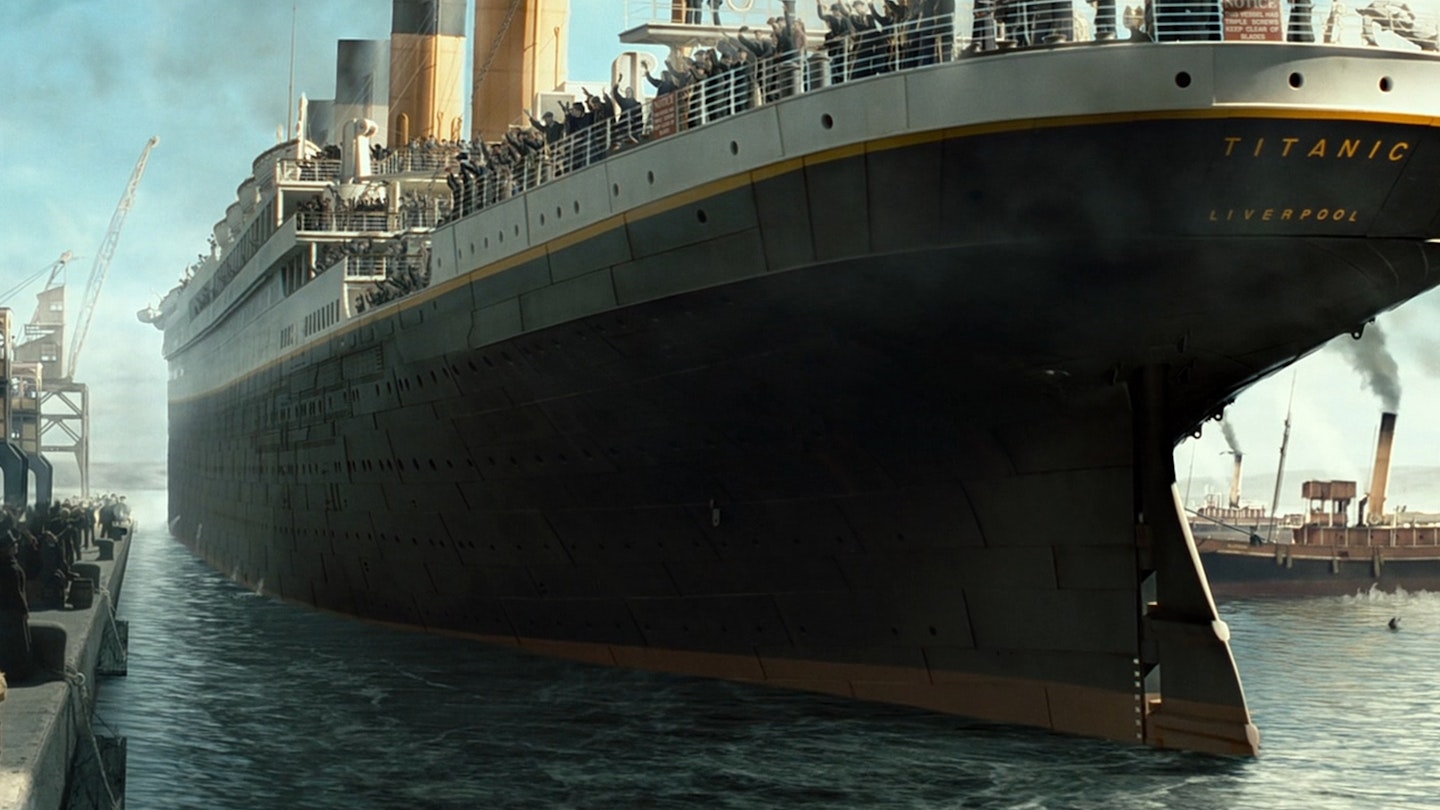
“I remember the very first thing I saw. It was the robot that Robert Ballard used to go inside the Titanic. And they showed a little bit of one of the chandeliers handing there and I thought ‘My God... that's incredible. They're using this space technology to go into the past like a time machine.’ And something clicked right then.”
In the meantime, Cameron would direct his other ocean-set movie The Abyss, in the process reinforcing his rapidly growing reputation as one of the maniacal directors in Hollywood. The shoot would come to be known as the most difficult in cinema history. The set would be located in an unfinished nuclear reactor. Actors would spend up to 11 hours 80 feet down, in pitch black, often in water so heavily chlorinated that skin would burn and hair would turn white. Ed Harris would burst into tears driving home from work and the first of a series of infamous Cameron crew T-shirts would be sported by the frazzled technicians: “Life's Abyss. And then you dive.”
But even during the gruelling shoot Cameron was mulling over his next waterborne epic.
“While I was shooting The Abyss I was meeting Robert Ballard and discovering that there was a romance to the wreck which appealed to me. I started reading up on the history and that is very seductive, you know? The event is almost perfectly novelistic. The elite of society were aboard, all the class issues, the number of people that died in steerage. It's got all these tensions and symbols. It's a goldmine. Obviously I’m not the only one who thought that, because there's been 17 movies, a miniseries, umpteen books and a Broadway musical. So the question is how do you create some illumination?”
———
James Cameron is in a submarine two-and-a-half miles below the surface of the Atlantic Ocean. To get there, the sub has had to free-fall for two-and-a-half hours through utter darkness. In typical style, he's decided to take a look at the wreck himself. Because he has a plan. He is going to make a move about the Titanic. And there is a way of giving it some new illumination. That way is to use the wreck of the Titanic itself in the movie. It will be the most ambitious location shoot of all time.
“I wasn't scared,” he remembers of the first time he came face to face with the wreck itself. “I’m not claustrophobic and I love diving. For me it was like landing on the moon.
“Then there's a moment where all the adrenaline and exhilaration dissipates. Half way through the first dive we'd kind of plopped down on the deck of the ship and there's this moment of, ‘My God. We're really at Titanic.’ The exhilaration gave way to, ‘That's the door that would have come off the first class stairwell where Colonel Archibald Gracy remembers not being able to get past people as the wave came up the deck and how he got swept away as the roof went under the water. And there is the davit for boat number one and after it was launched Bruce Isme, the owner of the ship, stepped onto the next boat and into infamy at that spot… right over there!’”
Twelve dives later Cameron would have the footage he needed for the modern day bookends that precede and follow the story proper. A robot camera belonging to his brother (that's him in The Abyss, with the crab crawling out of his mouth), fitted with a 35mm lens, had gone deeper into the wreck than anyone had before. It was time to start building a boat, and shooting a movie.
———
“Titanic Was A Tough Shoot: What Else Is New?"
The headline appeared in the LA Times above a personal letter from Cameron to the industry, and the media in particular.
“It seems to have become a dirty concept these days to work too hard, to care too much, to give your all,” he goes on, defending the shoot from the increasing avalanche of hair-raising stories emerging from Mexico. Am I driven? Yes, absolutely. Out of control? Never. Unsafe? Not on my watch.
“Lies and prevarication,” he laughs when asked about the tales of Mexican workers being forced to sleep on the ground, of dozens of stuntmen injured. “There was some truth to what was printed, and some things were exactly as described.”
Including, that is, the bizarre PCP-Iaced chowder tale. Bill Paxton would be among the numerous people hospitalised after persons unknown – though two cooks fired by Cameron the day before are the most persistently named culprits – spiked dinner with the drug.
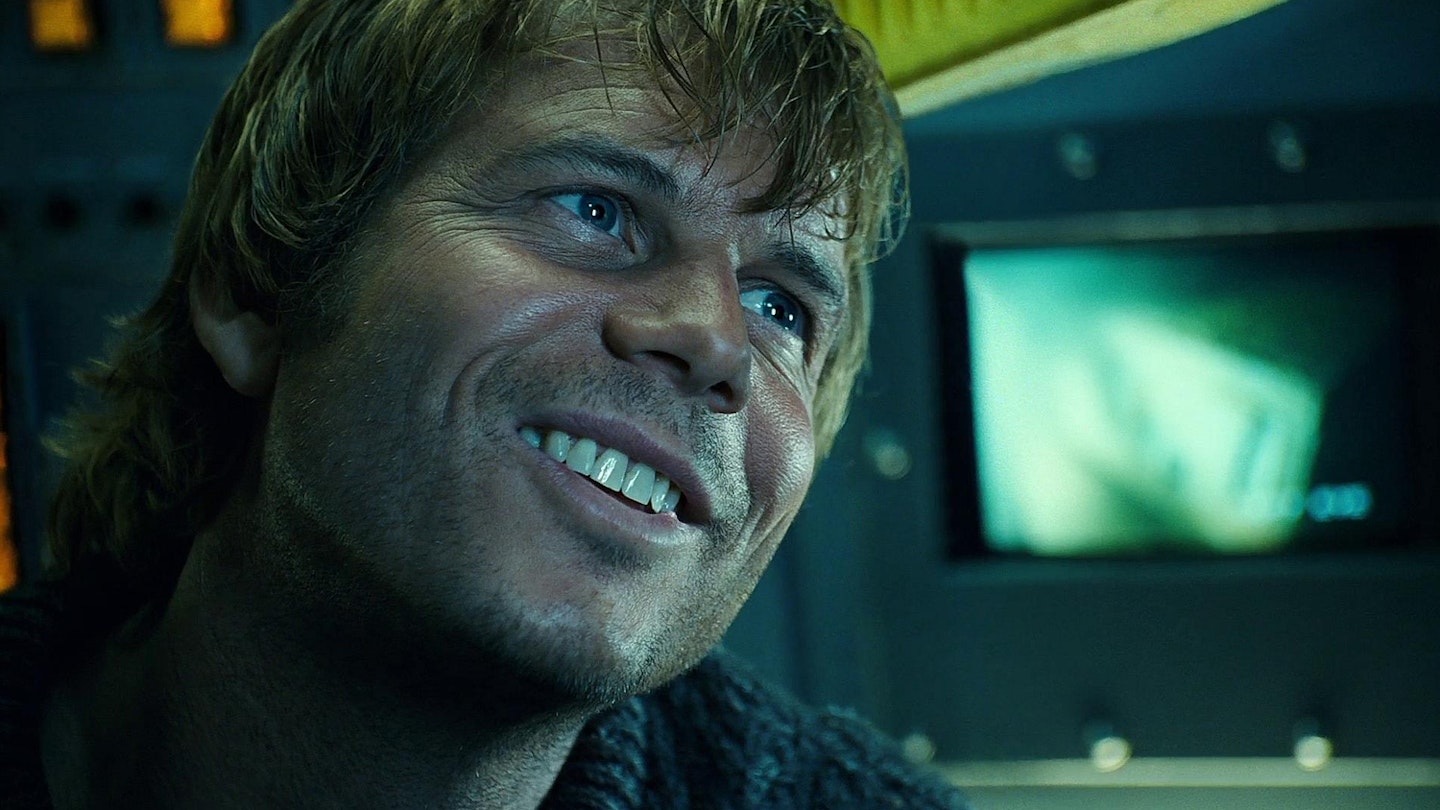
“It was total Bedlam,” Paxton remembers. “People were line dancing, people had crap coming out off their noses. Jim had one eye completely red, like the Terminator eyes, no pupil, no iris, just beet red. The other eye looked like he'd been sniffing glue since he was four.”
“The thing that really bothered me were the reports of widespread accidents and injuries and even deaths. Lack of safety and a reckless disregard for human life and all that,” claims Cameron. “The funny thing is, I've always had a reputation as one of the safest directors in Hollywood.”
Nevertheless the allegations grew in intensity. There were tales of kidney infections contracted from the gallons of filtered sea water that filled the tank and Kate Winslet claimed that she nearly drowned twice. Finally, the Screen Actors Guild sent representatives to inspect the set and quiz the director and crew. The SAG concluded that the director had “taken extraordinary measures to ensure the health and safety of the cast and crew”. The SAG went home. But the complaints continued.
I feel perfectly confident that if I decide to do an action movie tomorrow I could come up with something pretty goddamn exciting – James Cameron
Then there was the fact that, two months into the shoot, 20th Century Fox sold the US distribution rights to Paramount Pictures for $65 million. To industry watchers this looked very like Fox, appalled by the spiralling costs, had fired off the distress flares. It certainly seems like a deal cobbled together in haste. For their investment, Paramount got the rights to distribute a $200 million dollar movie in their home territory. They didn't need to spend a cent more. Fox, however, had to keep shelling out as the size and scope of the movie relentlessly grew.
“To represent it as panic is inaccurate,” Cameron says. “At the point the film was greenlit Fox said they'd only do it with a partner. And they want the film for the summer and so I've got to start shooting last month. So I said I will do the movie now and finding a partner is your problem. So there's a lag while they're searching for a partner and I'm shooting the movie. Paramount wanted in bad…”
Titanic didn’t come out in the summer, of course. Post production on the planet's biggest movie was as hectic as the shoot had been. Release dates were put back and back as Cameron, holed up in his ranch in LA worked a series of 17-hour days (fortified no doubt by the vitamin injections he administers to himself to keep his energy levels up), wrestling with 12 hours of footage, filling the memory capacity of three Avid digital editing machines. He cut. And cut more. The movie had wrapped in mid-March. The release date was July 2. Then July 18. And then, well, who the hell knew? The major effort was going into the hundreds of effects shots, from the digitised stunt men that would augment the 90 or so flesh and blood stunt players employed during the pivotal sinking sequence to the clouds of breath needed for the survivors floating in the icy Atlantic. The producer finally started farming out effects shots to arch rivals Industrial Light And Magic to ease the load off Cameron's effects company, Digital Domain. Meetings between the CEOs of the two studios became fraught and reportedly tended to end in ugly shrieking matches. A July 25 release date was abandoned. It looked like this film might never actually see the light of a multiplex. And still Cameron cut.
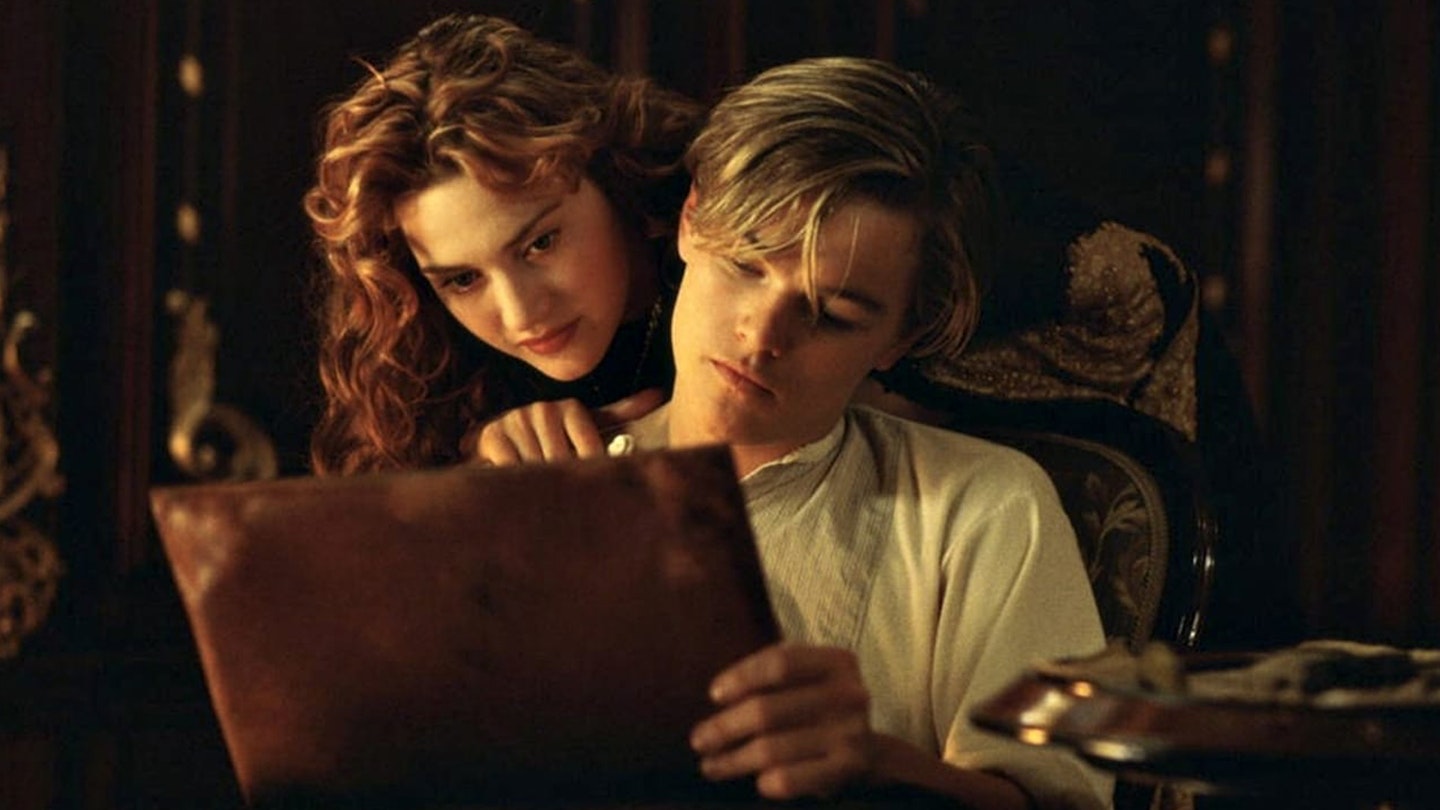
Finally, the director announced that the movie would be ready for a Christmas release. And as the execs heaved a sigh of relief and went to their calculators to tot up how much this behemoth would eventually cost them (even if the final cost to make the film is only $200 million at least that much again may have to be spent on publicity) word started to filter out on the movie itself. At ShoWest, an exhibitors’ bash where the cinema chain owners are shown their forthcoming movies, comparisons to Doctor Zhivago, Apocalypse Now and even Gone With The Wind were made. In Japan, where the movie premiered, audiences went berserk. The doom-mongers would have, it seems, to wait for another movie to end the trend of mega-budget blockbusters.
———
It’s all over now. On January 23 British audiences will finally get to see what, in scope and ambition at least, could well be the movie of the century. But Cameron is already casting around for new projects. He always has at least three on the go, but the action genre for which he is famed has been having a tough time lately. Cameron, like audiences, is a little dismayed by the lack of quality in many of today's action pieces.
“Look, I feel perfectly confident that if I decide to do an action movie tomorrow I could come up with something that would be pretty goddamn exciting,” he declares. “I think that people just don't know how to do action. They know how to do stunts. And anybody can do stunts. They're not doing anything if it doesn't add up to a story. The stunts in The Terminator, they weren't that great. They were pretty average. There was nothing you couldn't see in an average Dukes Of Hazard episode, probably done better. But because you cared about the people inside the cars, it meant something. I don't think the action genre has run out of steam. One of the first films to be shot was The Great Train Robbery. That was a shoot-out.”
But you can't imagine him doing a low-budget film.
“I guess it's a sickness. I keep being asked to do these movies and I keep doing them. But no, that's not impossible at all. I'm thinking of it. One of the things I loved about Titanic – and there weren't many moments of pure creative joy because the movie was so logistically difficult – was grabbing the Panaflex, putting on a 50mm lens and just throwing the camera over my shoulder and shooting the film hand held. I can imagine doing an entire film that way but it would have to be stripped right down. It has to be about writing and acting. That would be a lot of fun.”
———
When James Cameron was a boy, living in the tranquil suburbia near Niagara Falls, Ontario he played at being a soldier. The local youth would have block wars where one tribe would unilaterally declare open hostilities on their neighbours. Cameron loved it.
“I was the general,” he smiles, somewhat unsurprisingly.
Originally published in February 1998
